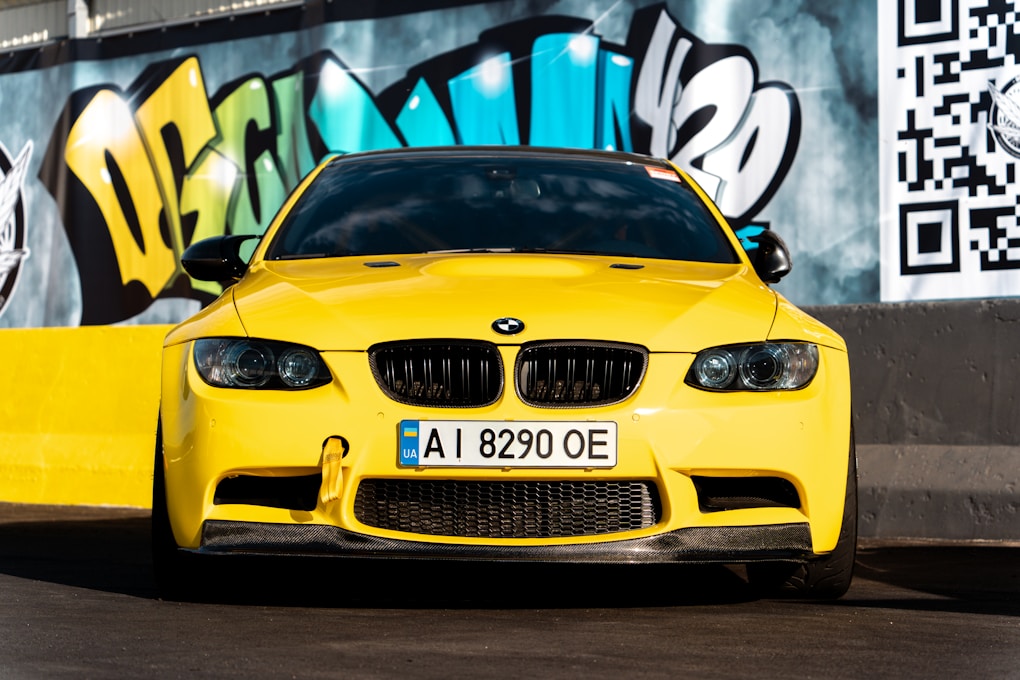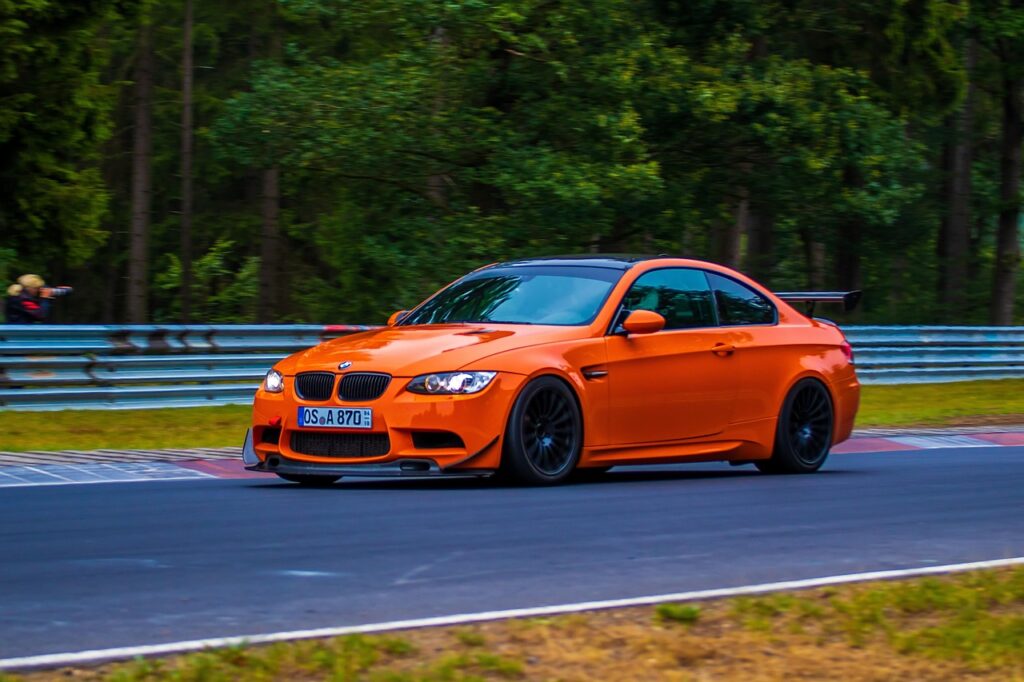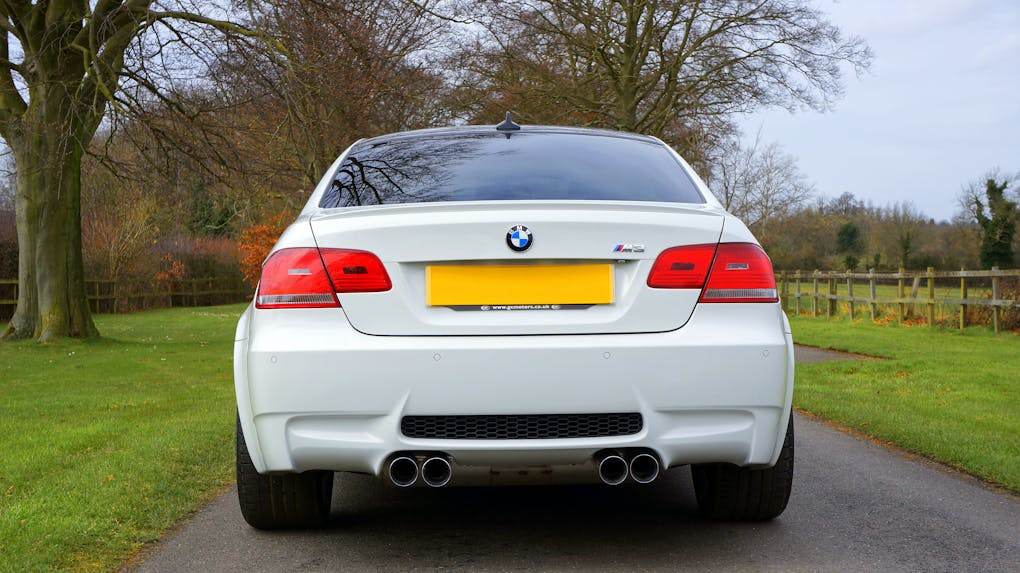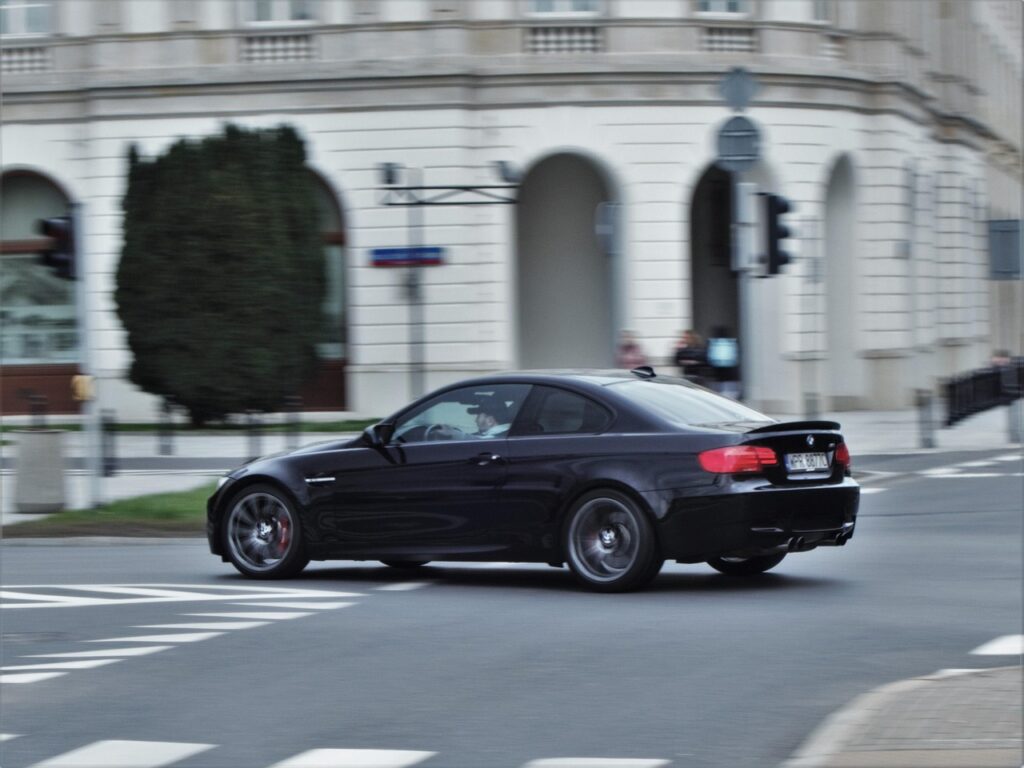The BMW E92 M3 offers a driving experience centered entirely around its high-revving, naturally aspirated V8 engine. We live in an age of synthesized exhaust notes and turbochargers that muffle an engine’s character for efficiency and easy torque. That’s why this car gets so much attention. It’s a loud, inefficient, and truly wild alternative to the direction modern cars have taken. This conversation isn’t about 0-60 times.
It’s about a feeling.
Let’s be real, though. The S65 V8 is the irreplaceable heart of the machine, a high-revving V8 with a throttle response modern cars just can’t touch. But you need to prepare your wallet for the “Big Three” maintenance items, because rod bearings, throttle actuators, and the idle control valve are eventual jobs, not potential problems. A set of test pipes is maybe the best mod you can do, uncorking the V8’s real voice for under a grand. It’s no surprise that clean manual coupes are becoming investment-grade cars while the higher-mile DCT models are the entry point for enthusiasts who want to drive them. An M3 with hydraulic steering and individual throttle bodies is the perfect analog answer in an increasingly digital world.

Quick Links
So How Did This Engine Even Get Approved?
You have to picture the meeting at M GmbH around 2005. The E46 M3’s straight-six was an icon and a tricky act to follow. The logical move was a bigger, more powerful six-cylinder engine. Instead, some brilliant person suggested they chop two cylinders off the 5.0-liter V10 from the M5 and M6.
And somehow, everyone in the room agreed.
The resulting 4.0-liter S65 V8 is not just an engine. It’s a statement.
Technically, it shares almost no parts with that S85 V10, maybe just the valve springs if memory serves, but the design philosophy is identical. It’s a 90-degree V8 with a sky-high 8,400 RPM redline, a bore and stroke of 92mm and 75.2mm which makes it massively oversquare, and eight individual throttle bodies. That last bit is the key.
Eight butterflies snapping open instantly, tied directly to your right foot. There’s no turbo lag because there’s no turbo. The response is so clean it feels like part of your nervous system. This engine also weighs 15kg less than the straight-six it replaced. That’s seriously impressive.
They pulled this off with a silicon-aluminum alloy block cast at BMW’s Landshut foundry, the same facility that made their Formula 1 engine blocks. So we can assum that this wasnt just a road car engine. It was motorsport tech, barely watered down for the street. It’s a complex, expensive, and frankly absurd solution to making power. And it’s amazing.
That Common Complaint (And Why It’s Part of the Point)

“There’s no low-end torque.” You’ll see it in every old magazine review and debated endlessly on forums. They aren’t wrong. The S65 makes its peak torque of 295 lb-ft at a high 3,900 RPM. My daily F31 diesel wagon probably makes about th same amount of torque right off idle or at least 1.5k rpm (but we’re not going to talk about diesels now in an e92 m3 article lol).
For the first month you own the only V8 M3, you’ll feel it. You’ll pull away from a light wondering where the push is, try to pass someone on the highway in sixth gear and get nothing, and probably think to yourself, “Did I make a huge mistake?”
No. Not at all.
You just haven’t learned to speak its language. This car requires effort. A modern M4, with its twin-turbos, gives you a huge wave of torque the second you touch the accelerator. The E92 M3 makes you work for it. It demands your full attention and participation. It wants you to drop down two, maybe even three gears. It wants you to watch the tachometer needle fly past 5,000, 6,000, and 7,000 RPM, where the engine noise hardens from a deep rumble into that manic, metallic scream.
The lack of torque isn’t a design flaw. It’s a filter. It forces you to become a more engaged driver. You have to anticipate, plan your overtakes, and select your gears with real intent. When you get it right, with a perfect heel-and-toe downshift into a corner that keeps the V8 boiling in its powerband on exit, the reward is a hundred times more satisfying than just stomping on the gas and letting a computer do the work for you.
The Big Three of Preventative Maintenance
Let’s be realistic for a moment. Owning a high-performance, limited-run German car from the 2000s comes with some baked-in costs. For the E92 M3, there are three major items to budget for, and ignoring them is a recipe for a very bad, very expensive day.
First up is the big one, Rod Bearings. This is the M3post forum boogeyman, and for good reason. The original bearings, especially on 2008-2010 cars, had extremely tight clearances and were made of a lead-copper material that could wear prematurely, particularly if the oil wasn’t warmed up properly before driving hard. The internet is full of photos of worn bearings and a few horror stories of engine failure. Is the risk overblown? Perhaps. But nobody sleeps well without having them replaced. The community-accepted fix is to proactively replace them with aftermarket bearings from brands like BE Bearings or VAC Motorsports, which have better clearances and a more durable material. Budget around $2,500 to $3,000 at a good independent shop. Do it once and enjoy that 8,400 RPM redline without worry.
Second on the list are the Throttle Actuators. This is a less dramatic but far more certain failure. The S65 has two of these units, one for each cylinder bank, controlling those amazing individual throttle bodies. The issue is a set of plastic gears inside the sealed electronic unit. Over thousands of heat cycles they get brittle, wear out, and eventually fail. This puts the car into limp mode and lights up the dash. It’s not a matter of if but when, usually around 60,000 to 80,000 miles. You can buy new OEM units for a fortune, or you can get your originals rebuilt with stronger metal gears for about a third of the cost. The rebuild is the smart move.
Third is the Idle Control Valve (ICV). This is a less common but still frequent problem. It can get gummed up with carbon or fail electronically, which leads to a bouncing, erratic idle or stalling when you come to a stop. Sometimes a good cleaning can fix it, but replacement is often the real solution. It’s a minor headache compared to the other two, but a headache all the same. This car isn’t a normal sedan. It demands mechanical sympathy and a proactive owner.
The $800 Mod That Unlocks Its Character

The stock E92 M3 exhaust is polite. It’s a bit too quiet and civilized. You can hear the V8, but it sounds like it’s talking from another room. The single most transformative modification you can make is the “primary cat delete,” better known as installing a set of test pipes.
This job involves replacing the two primary catalytic converters in the downpipes with simple, straight sections of stainless steel pipe.
The change is immediate and huge. The volume goes up by about 25 percent, but the character of the sound is what really changes. That restrained V8 rumble becomes a crisp, sharp, and exotic howl. It adds a raw, high-pitched edge that sounds straight out of the DTM championship. On upshifts, you get a sharp crackle. On downshifts, a great cascade of burbles. It’s the sound the M engineers probably wanted all along, before the regulators stepped in.
Power gains are small, maybe 15-20 horsepower, but the car feels much more aggressive and responsive. It just feels more alive. Most people pair this mod with a simple software tune to stop the check engine light from coming on and to smooth out the power delivery. The whole job, including the pipes, labor, and a basic tune, can usually be done for less than $1,000.
It is the best money you will spend on this car. Full stop. It’s the mod that makes you take the long way home.
Why Prices Are Doing That Weird Thing Right Now

For a while, the E92 M3 was a genuine performance bargain, with good examples selling for the price of a new hot hatch.
Those days are gone.
The market has finally woken up to what this car represents, which is the absolute end of a specific automotive era. At the top of the price pyramid are the collector cars: sub-50,000 mile coupes with the 6-speed manual, especially the post-2011 LCI (Life Cycle Impulse) models with the updated LED taillights and iDrive. Certain colors like Le Mans Blue or Melbourne Red add a premium. These cars are trading for strong money and are being bought by people who see them as a modern classic, an investment to park next to something like an air-cooled 911.
In the middle is the sweet spot for drivers. These are the cars with 60k-90k miles, in both manual and DCT. They’ve been driven, but hopefully, they’ve been cared for. This is where you have to do your homework. A thick folder of service history showing the “Big Three” have been addressed is worth thousands more than a clean-looking car with a blank history. This is the car you buy to actually drive hard. At the bottom are the high-mileage (100k+) cars, which are often early DCT models. These can look tempting, but they are a potential minefield. If the rod bearings and throttle actuators haven’t been done, you’re looking at a $5,000 bill right away. These only make sense if you can get them for a steal and are ready to do the work.
That V8 I was talking about earlier? It’s the reason these cars will never be truly cheap again. Automakers are not going back. This specific recipe of a compact, rear-drive coupe with a high-revving, naturally aspirated V8 and hydraulic steering is gone for good. The market knows it. This isn’t a bubble. It’s a fundamental market correction.
